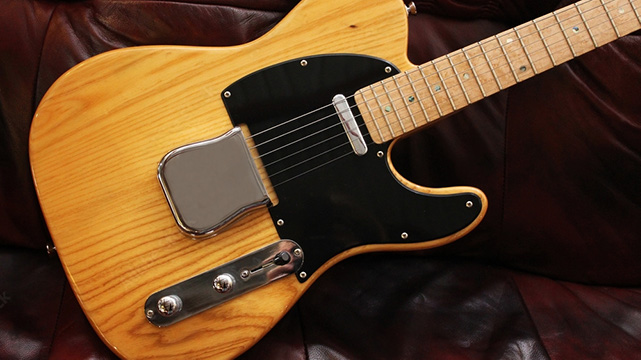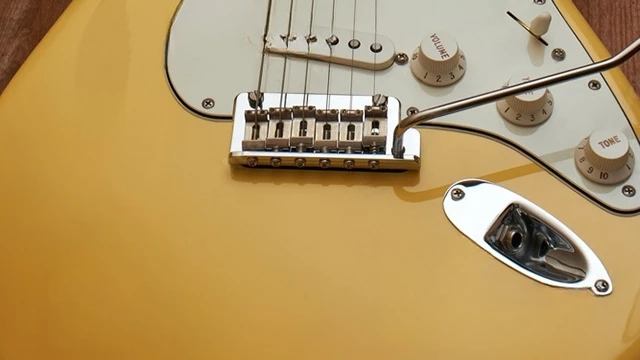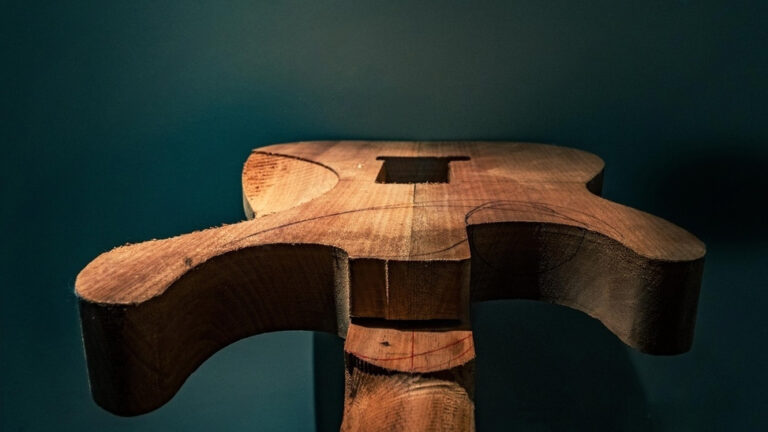Ash and alder are two of the most commonly used tonewoods and have been used for electric guitar bodies since the 1950s – when the first mass-produced electric guitar was introduced by Fender. Both of these being hardwoods, have been preferred by guitar manufacturers and their use still remains prevalent.
Although popular, both ash and alder are almost exclusively used for making the guitar bodies and seldom for the necks (where maple is preferred) or the fingerboards. The most common guitar types with either ash or alder bodies are Telecaster, Stratocaster, and the numerous guitars based on them. Besides these, many other “original” guitar types including hollow-bodies and chambered guitars by popular manufacturers also feature these tonewoods.
In this article, we will discuss the various characteristics of ash and alder, their histories, and what makes them so popular for guitars. I mean, Leo Fender must have been a genius at using something that’s still being used today! We’ll also discuss how either of these woods impacts the guitar – including its weight, appearance, and sound.
| Ash | Alder | |
|---|---|---|
| Density | Higher | High |
| Apperance | Lighter colored wood with visible grains | Slightly darker wood with less apparent grains |
| Tone | Brighter, resonant tone | Warmer tone with excellent midrange |
| Price | Ash guitars are generally more expensive | Alder guitars might be less expensive in most cases |
| Durability | Extremely durable thanks to the higher density | Slightly less (but still very) durable. |
More About Ash
There are many kinds of ash trees in the world, but we’ll limit our discussion to American ash which further constitutes two types. Northern ash, which is dense, hard, and used for making furniture. The other variety – swamp ash, found in the southern part of the USA, is often used for making guitar bodies. Swamp ash is harvested from the submerged parts of the trees and is lighter than regular ash.
More About Alder
Alder is a much more common tree found around the world, particularly in the northern hemisphere including America and Europe. There are several different types of alder wood available including ones having very different colors, but guitar makers mostly use red alder. Being a common hardwood, it’s also used for making furniture.
Ash vs Alder: Weight
Though swamp ash is often the choice for making guitars, some manufacturers also use regular ash due to climate change making swamp ash scarcer and more expensive. Guitars made from ash usually have more weight as they’re denser. Swamp ash guitars may have slightly less weight and are similar in weight to alder-body guitars.
However, this is a very generalized view that only considers the density of the body. We all know the total weight of a guitar depends on a lot of factors including the exact density of the wood, its body size and thickness, the wood used for the neck, the hardware, and any weight-relieving methods used or their lack thereof. Also, woods from different trees have slightly different characteristics – two exactly same guitars made from the same wood with the same everything would often have variations in weight as much as half and occasionally a pound.
This is to say, while ash and swamp ash is heavier than alder, guitars made from them can have varying weights. But two exact same guitars made from either of these tonewoods would, more often than not, have alder as the lighter one, with ash being the heaviest and swamp ash between the two.
Ash vs Alder: Appearance

Ash features more pronounced straight grains and a lighter color than alder which is why you’ll find a lot of transparent/translucent-finish guitars use swamp ash. The natural grains on ash look more beautiful and are perfect for these finishes that highlight it.

On the other hand, grains on alder, though more consistent, are less apparent and most of the alder guitars have solid-colored finishes.
Ash vs Alder: Tone
The discussion on Ash vs Alder is not complete without talking about their impact on the tone. A topic that’s sure to raise some eyebrows as some people believe tonewoods have very minimal if any, influence on the sound. While others believe they do impart their character on the tone and should, therefore, be considered for the type of music one wants to play. Either way, let’s see what a lot of people believe about the tonal qualities of each of these woods – I mean they are called tonewood for a reason, right?
Swamp ash is resonant, with a brighter high-end, clean tight midrange, and compelling low-end. Its tone is less warm than alder but with more treble and excellent sustain. Overall, ash is great for people looking for a well-balanced tone with slightly less warmth and great articulation. However, two different ash woods are more likely to differ in their tonal characteristics than two different alder wood, which makes them a little less consistent.
Alder, on the other hand, imparts a similar high-end brightness but with a slightly richer midrange and superior sustain. The overall tone is more focused, consistent, and reliable which makes it a great choice for professionals and studio recordings.
Ash vs Alder: Price
Ash and alder wood are almost the same price, at least they used to be until recently. However, things like ease of manufacturing process, finish, and more recently climate change making ash harder to source consistently have generally made ash more expensive than alder.
Ash has more open pores than alder which requires an additional filling process, it’s also generally harder to work with which increases the manufacturing cost of ash-body guitars. Secondly, since most ash guitars come with translucent finishes which are, again, generally more expensive to apply increases the cost.
Also, the recent climate and other changes have made it much harder to consistently source swamp ash fit for guitars making the price go up. Some sources say we might not even be able to get ash for much longer.
Ash vs Alder: Which should you choose?

Most people would be fine with going with either of these tonewoods. If you like a guitar, its physical characteristics like weight, look, etc., and how it plays and sounds, then it doesn’t matter if it’s made of either ash or alder – both will be good enough.

However, if you want an affordable and reliable guitar you might, in certain cases, be slightly better off with alder. On the other hand, if you want the best possible guitar for the price, like translucent finishes and a more unique sound, you might want to try a few ash guitars to find your pick.
Conclusion
Ash vs Alder and which one to get has been a topic of consideration since the introduction of the first mass-produced electric guitars – the Fender Esquire which used ash and Fender Broadcaster (now known as Telecaster) which mostly used alder. While most people would be better off choosing a guitar that suits them irrespective of whether they use ash or alder, some people might want to choose one or the other according to their preferences and needs. I hope this article helps them make an informed choice.


